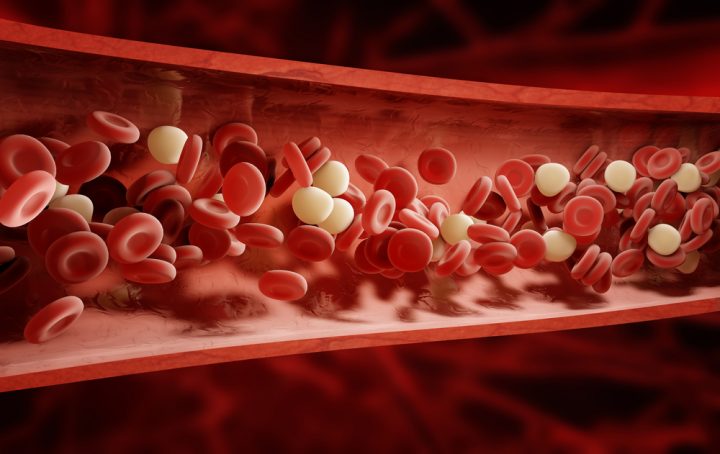IL-1 Cytokines May Play Distinct Roles in Scleroderma, Study Says

microcirculation benefits
Certain cytokines of the IL-1 family may play important and distinct roles in the development of systemic scleroderma (SSc), in particular IL‐1β, which may contribute to worse tissue scarring, a study suggests.
The findings appeared in the report, “Analysis of serum interleukin(IL)‐1α, IL‐1β and IL‐18 in patients with systemic sclerosis,” which was published in the journal Clinical & Translational Immunology.
SSc, also called systemic sclerosis, is a multi-system autoimmune disease characterized by abnormal scarring in the skin and internal organs, such as the heart, kidney, lungs, and gastrointestinal tract.
The disease is thought to develop as a result of interactions among three disease processes: faulty fibroblasts — cells critical for wound healing — which in SSc patients produce too much collagen, leading to excessive fibrosis; auto-immune responses, where the body makes antibodies that mistakenly attack healthy tissues; and damage to small blood vessels, or vasculopathy.
However, the exact cause of the disease remains poorly understood.
To gain more insight on the causes of SSc, a team of researchers measured the levels of small immune mediators, called cytokines, in patients with SSc and in healthy individuals, relating differences with the clinical features of patients.
In contrast to other autoimmune diseases, a clear cytokine profile has not yet been defined in SSc, researchers noted.
In the study, the team focused on members of the cytokine family of interleukin (IL)-1 — specifically IL‐1α, IL‐1β, and IL‐18 — known to play a part in fibrosis and autoimmune disease. These three cytokines promote inflammation and are frequently released as part of the body’s first line of defense, referred to as the innate immune system.
Prior studies have shown a link between these cytokines and SSc; however, existing reports have looked at small and poorly described patient populations.
To get more comprehensive data, researchers measured the levels of IL‐1α, IL‐1β, and IL‐18 in a large and well-characterized group of patients who were enrolled in the Australian Scleroderma Cohort Study, which was investigating SSc cardio-respiratory outcomes.
Blood samples of 105 patients were tested, along with those of 47 healthy controls, matched by gender and ethnicity. Most patients were female (82.9%), and Caucasian (83.5%), with a mean age of 60.1 years.
Data on organ involvement, types of treatment, and routine laboratory markers, along with other clinical parameters, including respiratory function measures and other diseases, were analyzed in respect to their correlation with cytokine levels.
The results showed that serum concentrations of IL‐18, but not IL‐1α or IL‐1β, were greater in SSc patients than in healthy controls.
However, there was a positive correlation — meaning the greater one, the greater the other — between the levels of IL‐1β and skin involvement in patients, particularly those with the limited form of the disease, as judged by the modified Rodnan skin score (mRSS), a “gold standard” scale for evaluating skin damage in SSc.
A similar association was seen between the amount of IL‐1α and anti‐topoisomerase I auto-antibodies, a biomarker of SSc, in the blood.
Taken together, these observations suggest “a potential role of these cytokines in SSc fibrotic complications,” researchers said.
Another observation, reported for the first time, was that SSc patients with high serum IL‐1α concentrations were more likely to have digital ulcers.
High levels of serum IL‐18 were found to be correlated with lower carbon monoxide transfer coefficient (KCO) and diffusing capacity of the lungs for carbon monoxide (DLCO) — two possible signs of a lung function problem.
Although no significant associations were noted with other measures of lung function, or the presence of interstitial lung disease (ILD) or pulmonary arterial hypertension (PAH), this finding might implicate IL‐18 in SSc-related lung disease, researchers said.
The team also found some evidence that IL-18 levels seemed to be higher in patients with scleroderma renal crisis (SRC) or PAH; however, patients within these groups were too few to draw any meaningful conclusions. It could be worthwhile to examine the potential role of IL‐18 in kidney, cardiac, and pulmonary SSc manifestations on larger patient groups, the researchers noted.
“To date, our study is the largest and most ethnically diverse to investigate the clinical relevance of serum IL‐1α, IL‐1β and IL‐18 in SSc,” researchers said, and the data obtained “suggest that these IL‐1 family cytokines may have different roles in the pathogenesis of SSc fibrotic complications.”
The team concluded that the “findings underscore the value of further research to investigate the mechanisms through which the IL‐1 superfamily may contribute to SSc fibrotic complications.”






